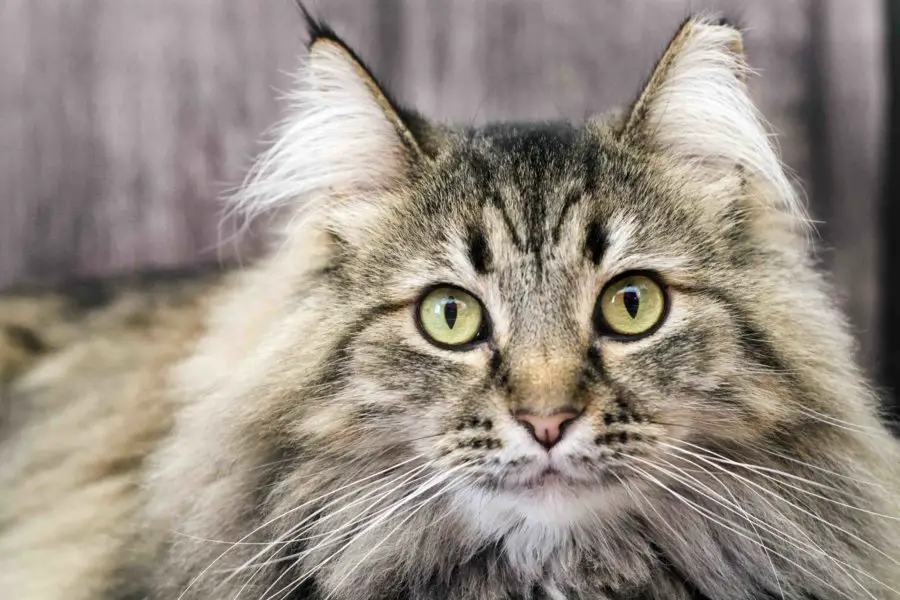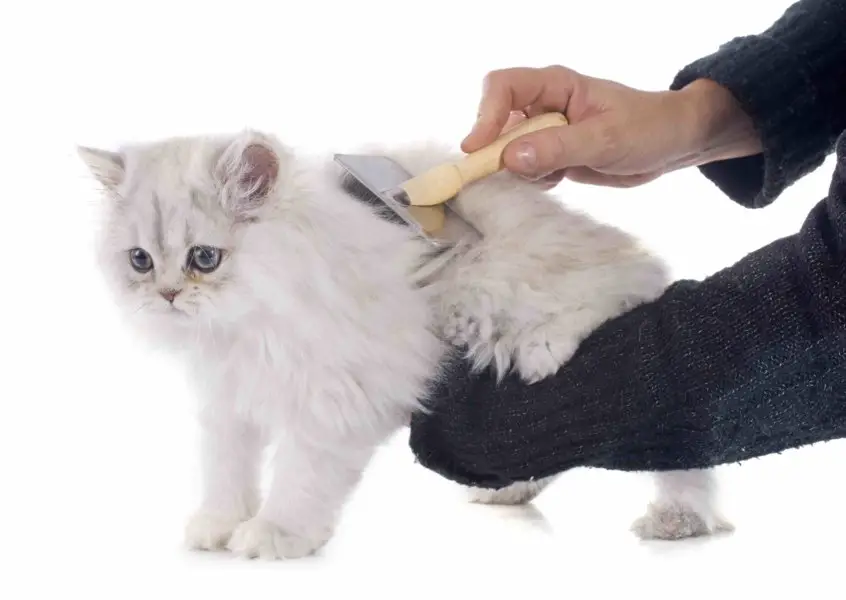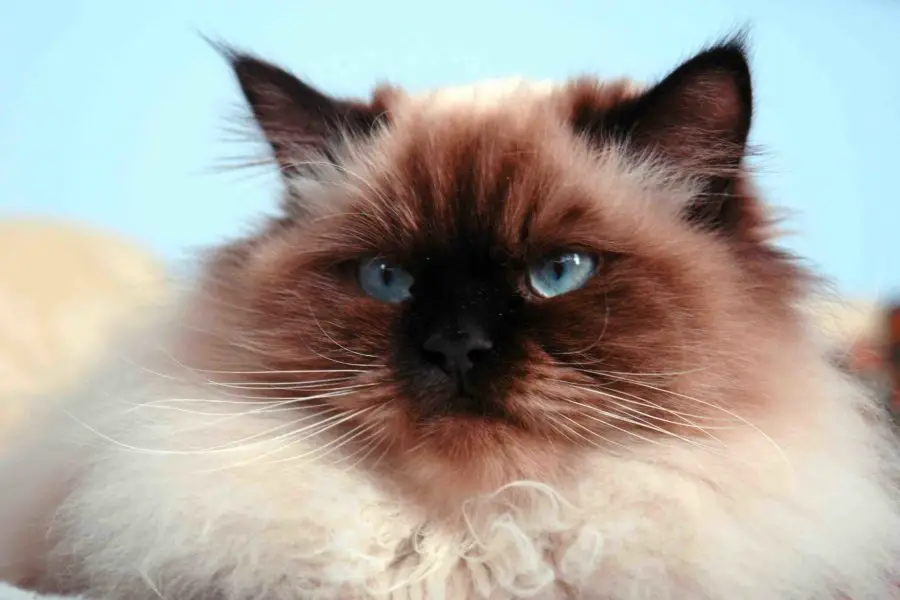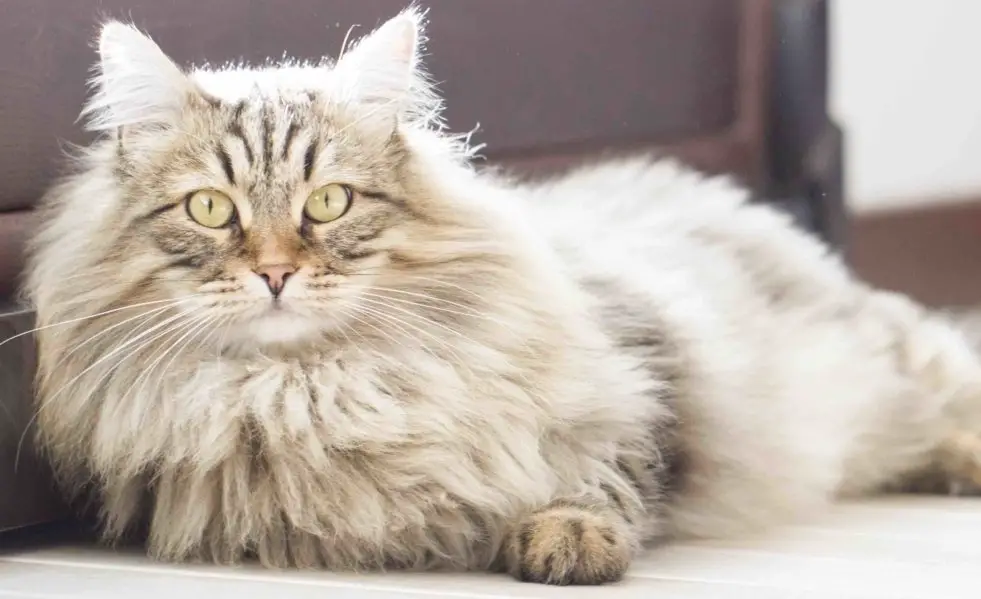If you can cite mini tumbleweeds of fur rolling across your feet as a common occurrence, you’re probably the owner of a long-haired cat. They’re beautiful (and they know it), but seriously, you’ve had to apologize to guests one too many times for finding fur in their food. You might not think of cats’ grooming needs as anything beyond a good brushing or combing, but it can also be helpful to bathe them periodically, especially long-hairs.
We spoke with Leanne Selof, a professional pet groomer who works with PurrFurred Pet Styling in Naperville, Illinois, about the benefits and the dos and don’ts of grooming your long-haired cat.
Why is grooming your long-haired cat important?
The main reason it’s so important to groom your cat is to prevent mats. Selof explains that your cat cannot remove mats themselves, so you must brush or comb them regularly, taking care to really get into any you might find. “Mats form at the skin and work out, so you want to make sure you’re getting all the way down to the base,” Selof says. Though our focus is on long-haired cats, short-hairs are prone to matting, too, so don’t leave them out of your grooming sessions!
“Mats form at the skin and work out, so you want to make sure you’re getting all the way down to the base”

How much of your cat’s grooming can you do yourself?
Selof recommends regularly grooming your cat at home, which can be as basic as brushing or combing out their fur once a week. Some cats are finicky, making it difficult to safely groom their problem areas (belly, groin, under legs) yourself. Selof warns that cats’ skin is delicate in these spots, so it’s easy to nick them if they’re squirming. If this is the case for your cat, you may want to consider a professional groomer.
“A cat’s skin is so thin and sensitive, you can cut them so easily.”
How often should your cat be groomed?
Once a week is appropriate for brushing and combing, but a full grooming should only be done every six to eight weeks. This can include bathing, fur trimming/shaving, nail trims–pretty much anything you’d have difficulty doing yourself. When it comes to bathing, it’s important not to have it done too often. “When you’re washing them, you’re taking out their natural oils, so you can dry out their skin and cause them to have flakiness,” Selof says. Anything more than once a month is unnecessary because cats spend so much time grooming themselves, she notes.
“When you’re washing them, you’re taking out their natural oils, so you can dry out their skin and cause them to have flakines”

What do you need to know before bringing your cat to a professional groomer?
Whether you take your cat to the groomer or have a mobile groomer come to your home, there are dos and don’ts to remember. Selof says you should never bathe your cat yourself before bringing them in. You might imagine you’re doing the groomer a favor, but if your cat does have any mats, water will tighten them. Wait as long as you can to put your cat in its carrier; the less time they spend in it, the more docile they will be for the grooming. “Anything out of the ordinary routine for a cat is grounds for upsetting them,” Selof says. If you plan to have your cat groomed regularly, you should stick to one groomer if possible. Eventually, your cat will learn their voice and learn the routine. That doesn’t mean they’re going to start enjoying it, but it will be less stressful.

Things to remember when grooming your long-haired cat
After getting a full grooming, your cat may act angry with you or want to hide for a day or two. This is normal, and the best you can do is allow them to come out of it on their own. On the other hand, Selof says she has seen cats who absolutely love being groomed and like to strut and prance around when they’re done. One thing she says an owner should never attempt on their own is trimming and cutting a cat’s fur. “A cat’s skin is so thin and sensitive, you can cut them so easily.” Whether your cat loves you or hates you for aiding them in their grooming needs, you can rest assured you’re doing them a favor, so get brushing!
Love long haired cats? Check out this post about the Fluffiest Cats in the World!
About the author
Dana Mack is a freelance writer and copy editor living in Illinois. She recently graduated from Columbia College Chicago, where she studied multimedia journalism. Dana enjoys arts & culture and outdoor/recreation writing, and aspires to move out West in the future.
